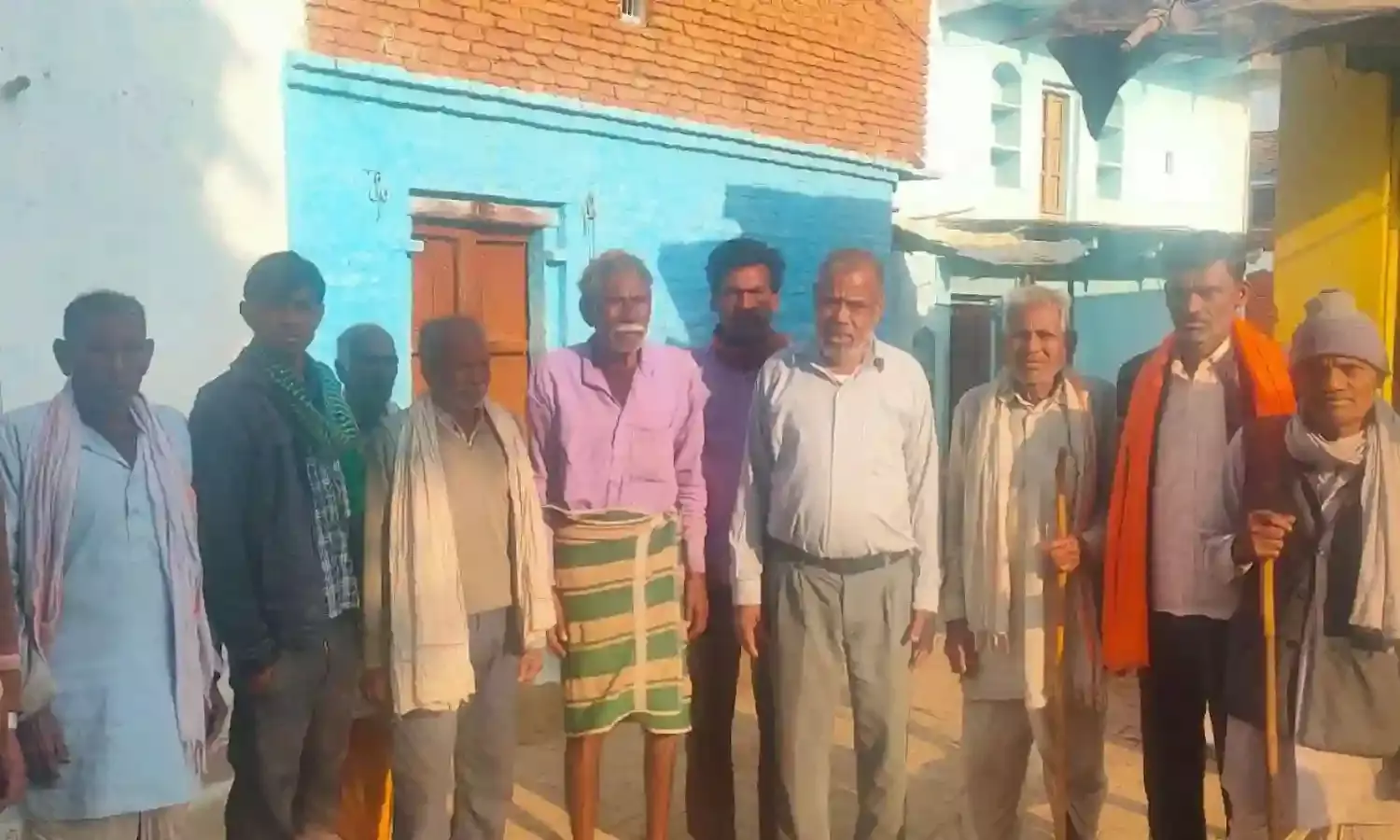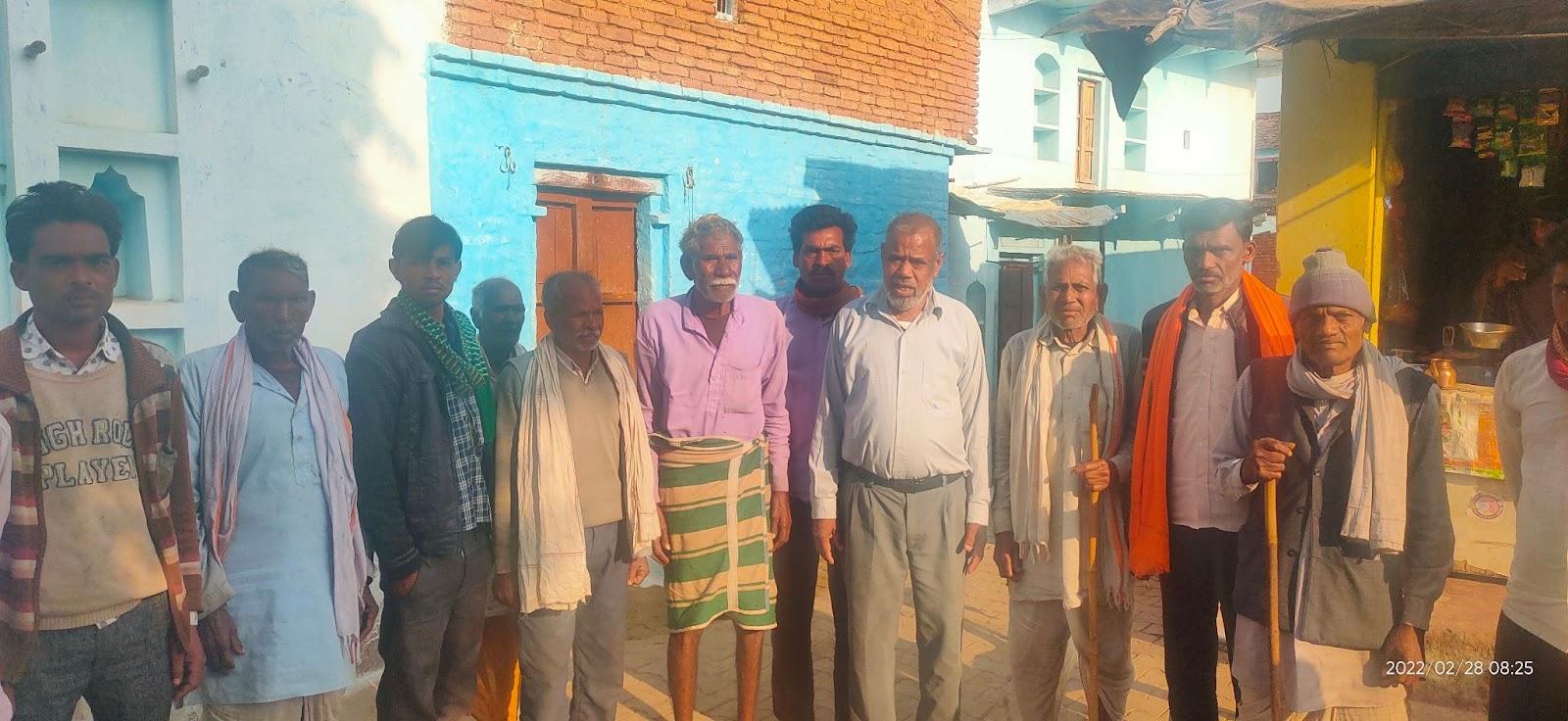Bundelkhand Farmers Oppose Revival of Wasteful Project
New canal unneeded, seepage will destroy land and homes

Despite the growing budgets for water conservation and irrigation, real benefits are not reaching the villages of Bundelkhand region in Uttar Pradesh. Wrong priorities, poor planning, alienation from people and corruption have all combined to deny the badly needed benefits of widely publicized government schemes to the people of Bundelkhand.
The recent revival of the Kachnauda irrigation scheme in Lalitpur district is an example of the authorities refusing to learn from past mistakes. The scheme was abandoned over a decade ago due to strong opposition from people in several villages. I had visited these villages along with some leading social activists of Bundelkhand and together we prepared a report which was widely discussed. After this the project remained suspended for a long time and the residents had taken it for granted that it will not be pursued. So when suddenly, very recently, they saw activities relating to this resume they were alarmed and are now having to run around to protect their farms from being damaged by ill-planned construction work.
According to Shyam Lal, a farmer of Bamhori Sehna village, “If the new drainage is created my standing wheat crop will be harmed badly and my fields will suffer longer term harm too.” Ram Gopal, another farmer of this village said, “The new drainage is being created in a very wrong way and during the rains the water will enter our fields and erode them.”
Mangal Singh, the famous farmer-scientist known widely for his invention of Mangal Turbine and his understanding of water and irrigation issues, lives in a nearly village and is very familiar with the area. He said, “At the time of changing this project a decade back, the budget was suddenly increased very heavily. So how can you make a project more harmful while also increasing its budget at the same time? Clearly it needs to be explained to people why they are being subjected to such harm and at the same time so much money is being wasted.”
Yes, this is what the authorities should do immediately. They should organize jan sunwai or public hearing in the area where the affected people are able to give their viewpoint in a free and frank way, while the government also explains its plans in a completely transparent way. If democratic functioning and transparency and accountability are practised, it is still possble to avoid massive wastage of funds as well as even more serious harm to many villagers.
The controversial project is the Kachnauda dam and canal on the Sajnam river in Lalitpur district, Uttar Pradesh. The earliest version of the project was actually not considered harmful by the people and was not opposed by them. This aimed at taking the canal water to a dry existing canal of an earlier project at a proper site with minimal adverse effects.
However around 2010 this was suddenly changed. The changed version unnecessarily constructs an elevated canal over a long distance parallel to the existing canal of a previous project. There is no need for this extra elevated construction as the dry canal of a previous project already exists in the area. What is more, the new alignment of canal takes the canal to a height of about 25 feet and even higher. The nearby villagers complain with one voice that this can potentially destroy their villages.
People of about six villages with a total population of about ten thousand will be very adversely affected by the changed version of the project, we were told by people at the time. These villages in Bar block include Bamhori Sehna, Bhailoni Lodh, Bar, Motikhera, Dasrara, Bachravni and parts of Turka village.
As the people of Bamhori Sehna village (panchayat Bhailoni Lodh, Block Bar) including elected panchayat representatives told us when we visited their village at the time, they were never informed earlier that the canal will be taken from such a height, higher than their kutcha homes. They said that the seepage from this will destroy their houses as well as their fields.
They explained that the wall will create a barrier dividing fields and temples on one side and houses on the other side. Thus normal drainage will be badly affected leading to much greater threat of waterlogging and floods and eventual destruction of agriculture in the village.
Even a very partial construction had led to waterlogging of the Dalit basti. The soil taken for very high construction will also ruin fertile fields, the farmers said. “The farmland here is less but it is very fertile. If this fertile land is lost the farmers here will be ruined,” villagers told us. In addition a very important hundred year old tank will be lost due to huge trenches which were being dug before the project was abandoned the first time, to obtain soil using heavy machines.
Karan Singh, a farmer of Bamhori Sena village said, “We are convinced that this project will ruin our village if allowed to go ahead. We want the project to go back to its old version in which our villages are not adversely affected.”
With women in the forefront of opposing the Kachnauda dam and new canal, Guddi Devi said, “When we went in a group to stop the work of this destructive project, we were threatened that we will be beaten up and a truck will be sent to run over all.”
Devi Singh, a teacher in Moti Khera village said, “We realised a bit late about the disastrous implications of the revised project but since then we are firmly opposed to this project.”
Clearly such glaring wastage of funds has to be checked. Fortunately the mobilisation of people had the desired impact and work on this project was stopped. It was not revived for over a decade. Now farmers here are seeing activities like shutting off old drainage channels and building new ones which indicates that the abandoned project is being revived around election time. Often it is around elections that the powerful construction and contractor lobby asserts itself to get a lot of new business.

Bundelkhand Needs Better Water Conservation
Bundelkhand is spread over about 69,000 sq km of land in seven districts of Uttar Pradesh (Chitrakut, Banda, Jhansi, Jalaun, Hamirpur, Mahoba and Lalitpur) and six districts of Madhya Pradesh (Chhatarpur, Tikamgarh, Damoh, Sagar, Datia and Panna). During repeated visits to the region in recent years, particularly in times of acute drought, almost all the people we contacted agreed that particularly during the last decade there have been significant changes in weather patterns which have adversely affected farmers and farming. Comparing the recent drought years with the situation 25 to 30 years earlier, people say that rainfall has decreased, the number of rainy days has decreased, rain tends to be concentrated in a smaller number of days, and cases of untimely rain are more common (frequently harming farmers instead of helping them). The damage caused by hailstorms, frost and storms has also increased. In these conditions there is urgent need for better water conservation work, but unfortunately instead highly wasteful projects are being inflicted on the region.
Bharat Dogra is honorary convenor, Save the Earth campaign



